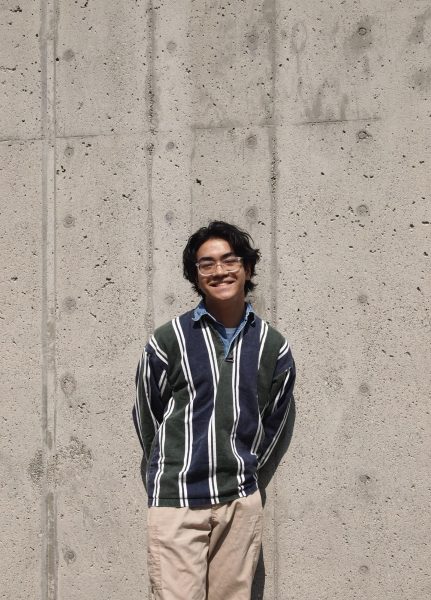The highest form of student leadership and advocacy here on campus, the Associated Student Body (ASB) was instituted as a decisive bridge between the voice of students and the authority of administrators. Unlike in most American high schools, our ASB is delegated to two separate bodies: the Student Activities Board, which plans, promotes, and executes student events, and the Student-Faculty Senate, which examines and implements school policies. A body founded on the representation of students, ASB hasn’t sparked much controversy among its constituents. That wasn’t until this year.
Approaching the end of the previous school year, the administration announced the revised ASB constitution. You may be familiar with the initial reactions to this document because Brynn Manke B’24 covered these controversial changes in her article on May 23, 2023. In case you aren’t familiar with said changes, listed below are the major ones:
-Student Activities Board is now appointed by administrators via applications rather than elections held by students.
-Students are no longer represented by class presidents or an overarching Executive Council.
-All ASB leadership roles are now distinguished by house rather than grade level, creating even more available positions.
-Freshmen and sophomores may observe ASB meetings as Pages, but are no longer involved in any voting processes.
-Student Activities Board committees are now divided into Assemblies, Dances, Campus Life, Intramurals, Senior Activities, and Communications/Marketing.
In a review of the drastic reshaping of the student government structure, those operating under the novel constitution–current ASB officers–were interviewed to interpret these modifications and evaluate their efficacy. Additionally, a central adult administrator of ASB was interviewed to provide rationale for a number of these revisions. Activities Board and Senate have already made measurable impacts on campus life, but varying levels of support for this fledgling constitution make this year’s ASB worth the scrutiny.
Perhaps the most provocative change, the removal of student elections was so silent, most Bellarmine students aren’t even aware of who is representing them. ASB returner on the Activities Board Cassie Brinlee B’25 shared her thoughts–Brinlee liked “the idea of having this application process [because] it’s less of a popularity contest” but, similar to many others, felt the “eradication of the election process was a massive misstep. A lot of people feel very detached from ASB because they have no hand to play in picking who’s on the Activities Board.” Additionally, because each member was appointed to a committee rather than an individual position, officers are relegated collectively. Not everyone felt this nuance was contributing to the specialization that comes with student leadership.
Another returner to ASB, Charlene Kim-Aun B’24 felt this lack of appellations was “a little discouraging [because] when you don’t necessarily have a title, you 1) feel less responsible for showing up to meetings, and 2) people don’t know what to do [or] what their role is.” Thoughts from two of our officers indicate that our student body may not be as associated as ASB suggests. Brinlee felt this compartmentalization meant officers aren’t “really communicating with each other”, while Kim-Aun understood “the desire for more student representation, but I feel like there could be more efficient ways to execute [it].”
Student Senate is a different story. With regards to the referendum, this body has remained mostly the same–all current senators did not submit an application or sign a contract. This difference sparked some contradictory views, one of which was expressed by Secretary Connor Mau B’25: “I do find it weird that there are application-based roles but some based on student popular vote. I see some strength in administration intervening, but if you’re going to enact one change, you might as well make it consistent.” Because Student Senate implements policies that affect everyone similarly, the complete erasure of underclass ASB members has also yielded contrasting opinions.
Senator Cole Tamurian B’24 agreed that juniors and seniors are most fit to represent because they “have a sense of what you’re looking for in a school and know what’s best for the underclassmen,” whereas Mau believed “it’d be more cohesive as a student community if we incorporated more freshmen and sophomores.” Even within this smaller body are converse outlooks on the new constitution. Diversity of opinion can be conducive to positive change, but is that the case with our ASB? There was no one better to ask than the central author of this year’s constitution, Administrator Kristine Zelazny.
Assistant Director of Student Activity and ASB Moderator Zelazny has worked closely with the Activities Board and had an active role in implementing the changes described. To her, there was one common agent that influenced all of the changes: involvement. Involvement was achieved through increased positions and an open application process, but Zelazny saw much room for improvement: “These committees have started out very strong [and] there’s always room for improvement to get these students involved. Hopefully we have a better way to measure that by the end of the year.” By the time this school year ends and constitutional discussions reopen, she hoped “the edits [will] come from the students. I want them to tell me what worked well and what didn’t”. Open to changes and receptive to feedback, how will Zelazny, along with the rest of administration, accommodate the critiques of our student representatives?
Despite several disagreements, this isn’t the first time the ASB structure underwent major transitions between school years. As Zelazny put it, “things are constantly changing because the student body is constantly changing.” That much is undeniable, but only ASB can determine if disparate opinions on the constitution will help or hurt their impact. There are a number of successful assemblies, activities, and program policies produced thus far from ASB, but it may be necessary to take them all with a grain of salt.


